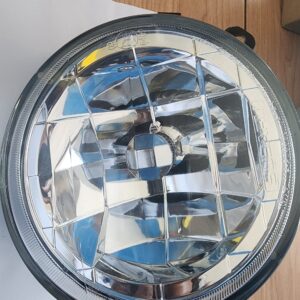Title: Navigating the Gears: The Essential Role of Transmission Speed Sensors
In the intricate world of automotive engineering, precision and efficiency are paramount. Among the multitude of components orchestrating the symphony of mechanical movements within a vehicle, transmission speed sensors stand out as unsung heroes, silently monitoring the velocity of transmission components to ensure smooth gear shifts and optimal performance. In this blog, we’ll explore the significance of transmission speed sensors, how they work, their types, and their indispensable contribution to the seamless operation of modern transmissions.
### Understanding Transmission Speed Sensors
Transmission speed sensors, also known as vehicle speed sensors (VSS) or turbine speed sensors, are integral components of automatic transmissions. They are tasked with precisely measuring the rotational speed of transmission components, such as the input and output shafts or the turbine, and transmitting this data to the transmission control module (TCM) or engine control unit (ECU).
### How Transmission Speed Sensors Work
Transmission speed sensors typically utilize magnetic or Hall effect technology to detect the rotation of transmission components. As these components rotate, they induce changes in magnetic fields or produce electrical signals, which are then interpreted by the sensor. The sensor converts these signals into speed readings, which are used by the TCM or ECU to control various transmission functions, such as shifting points, torque converter lockup, and traction control.
### Types of Transmission Speed Sensors
1. **Input Shaft Speed Sensor**: Located within the transmission, the input shaft speed sensor monitors the rotational speed of the transmission input shaft, which is connected to the engine via the torque converter. This sensor provides crucial data for determining the appropriate gear ratio and shift timing.
2. **Output Shaft Speed Sensor**: Situated within the transmission or at the transmission output, the output shaft speed sensor measures the rotational speed of the transmission output shaft, which drives the wheels via the drivetrain. This sensor helps ensure smooth gear changes and accurate speed readings for the vehicle’s speedometer.
### Importance of Transmission Speed Sensors
1. **Optimal Gear Shifting**: Transmission speed sensors play a vital role in determining the optimal gear ratio and shift timing based on vehicle speed and engine load, ensuring smooth and efficient gear changes.
2. **Torque Converter Lockup**: By monitoring transmission input and output speeds, speed sensors enable the TCM or ECU to engage and disengage the torque converter lockup clutch at the appropriate times, improving fuel efficiency and reducing heat buildup within the transmission.
3. **Traction Control**: Transmission speed sensors provide essential data for traction control systems, allowing the vehicle to adjust power delivery and braking to optimize traction and stability in various driving conditions.
### Conclusion
In the intricate dance of gears and shafts within an automatic transmission, transmission speed sensors emerge as silent sentinels, providing crucial feedback to ensure smooth gear changes, optimal performance, and enhanced driving dynamics. By monitoring the rotational speeds of transmission components, these unassuming sensors play a pivotal role in shaping the driving experience, ensuring that every shift is executed with precision and finesse. As automotive technology continues to advance, the importance of transmission speed sensors in optimizing transmission performance and fuel efficiency remains undeniably critical, ensuring that vehicles navigate the roads with confidence and reliability.
In stock (can be backordered)
$18,926.31
Title: Navigating the Gears: The Essential Role of Transmission Speed Sensors
In the intricate world of automotive engineering, precision and efficiency are paramount. Among the multitude of components orchestrating the symphony of mechanical movements within a vehicle, transmission speed sensors stand out as unsung heroes, silently monitoring the velocity of transmission components to ensure smooth gear shifts and optimal performance. In this blog, we’ll explore the significance of transmission speed sensors, how they work, their types, and their indispensable contribution to the seamless operation of modern transmissions.
### Understanding Transmission Speed Sensors
Transmission speed sensors, also known as vehicle speed sensors (VSS) or turbine speed sensors, are integral components of automatic transmissions. They are tasked with precisely measuring the rotational speed of transmission components, such as the input and output shafts or the turbine, and transmitting this data to the transmission control module (TCM) or engine control unit (ECU).
### How Transmission Speed Sensors Work
Transmission speed sensors typically utilize magnetic or Hall effect technology to detect the rotation of transmission components. As these components rotate, they induce changes in magnetic fields or produce electrical signals, which are then interpreted by the sensor. The sensor converts these signals into speed readings, which are used by the TCM or ECU to control various transmission functions, such as shifting points, torque converter lockup, and traction control.
### Types of Transmission Speed Sensors
1. **Input Shaft Speed Sensor**: Located within the transmission, the input shaft speed sensor monitors the rotational speed of the transmission input shaft, which is connected to the engine via the torque converter. This sensor provides crucial data for determining the appropriate gear ratio and shift timing.
2. **Output Shaft Speed Sensor**: Situated within the transmission or at the transmission output, the output shaft speed sensor measures the rotational speed of the transmission output shaft, which drives the wheels via the drivetrain. This sensor helps ensure smooth gear changes and accurate speed readings for the vehicle’s speedometer.
### Importance of Transmission Speed Sensors
1. **Optimal Gear Shifting**: Transmission speed sensors play a vital role in determining the optimal gear ratio and shift timing based on vehicle speed and engine load, ensuring smooth and efficient gear changes.
2. **Torque Converter Lockup**: By monitoring transmission input and output speeds, speed sensors enable the TCM or ECU to engage and disengage the torque converter lockup clutch at the appropriate times, improving fuel efficiency and reducing heat buildup within the transmission.
3. **Traction Control**: Transmission speed sensors provide essential data for traction control systems, allowing the vehicle to adjust power delivery and braking to optimize traction and stability in various driving conditions.
### Conclusion
In the intricate dance of gears and shafts within an automatic transmission, transmission speed sensors emerge as silent sentinels, providing crucial feedback to ensure smooth gear changes, optimal performance, and enhanced driving dynamics. By monitoring the rotational speeds of transmission components, these unassuming sensors play a pivotal role in shaping the driving experience, ensuring that every shift is executed with precision and finesse. As automotive technology continues to advance, the importance of transmission speed sensors in optimizing transmission performance and fuel efficiency remains undeniably critical, ensuring that vehicles navigate the roads with confidence and reliability.
| Warehouse | Inventory at warehouse 2 |
|---|


Get E-mail updates about our latest products and special offers.
Sensors and More is Jamaica’s ultimate online auto parts store. Established in 2020, we specialize in genuine electrical parts for Japanese, Read more…
Reviews
There are no reviews yet.